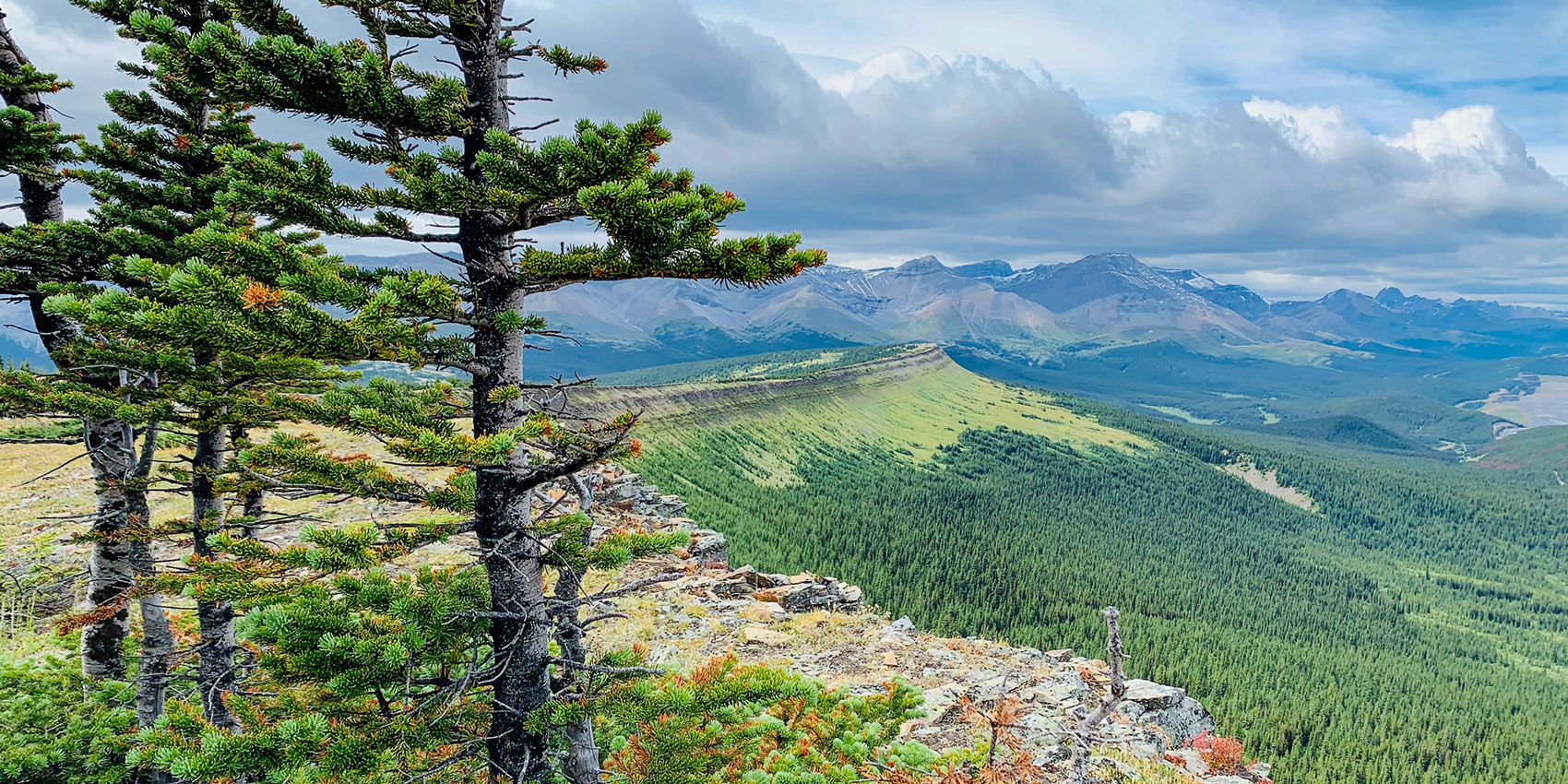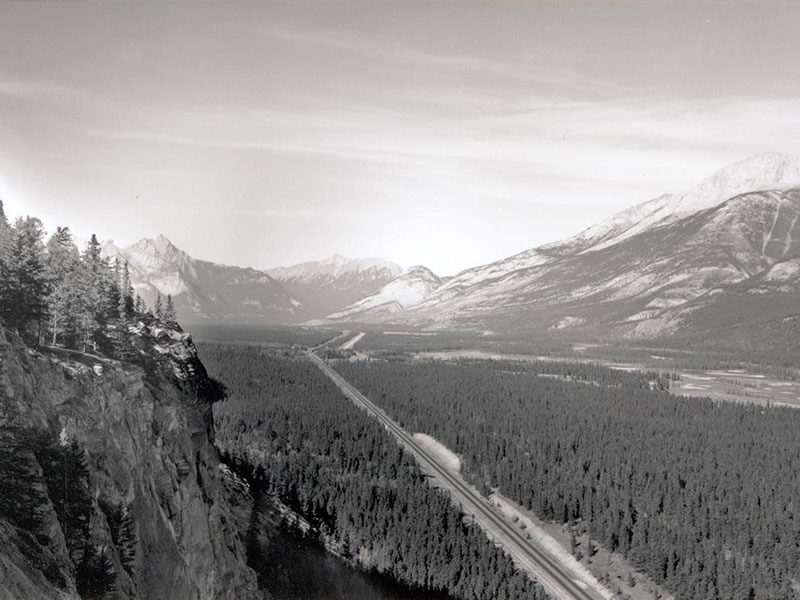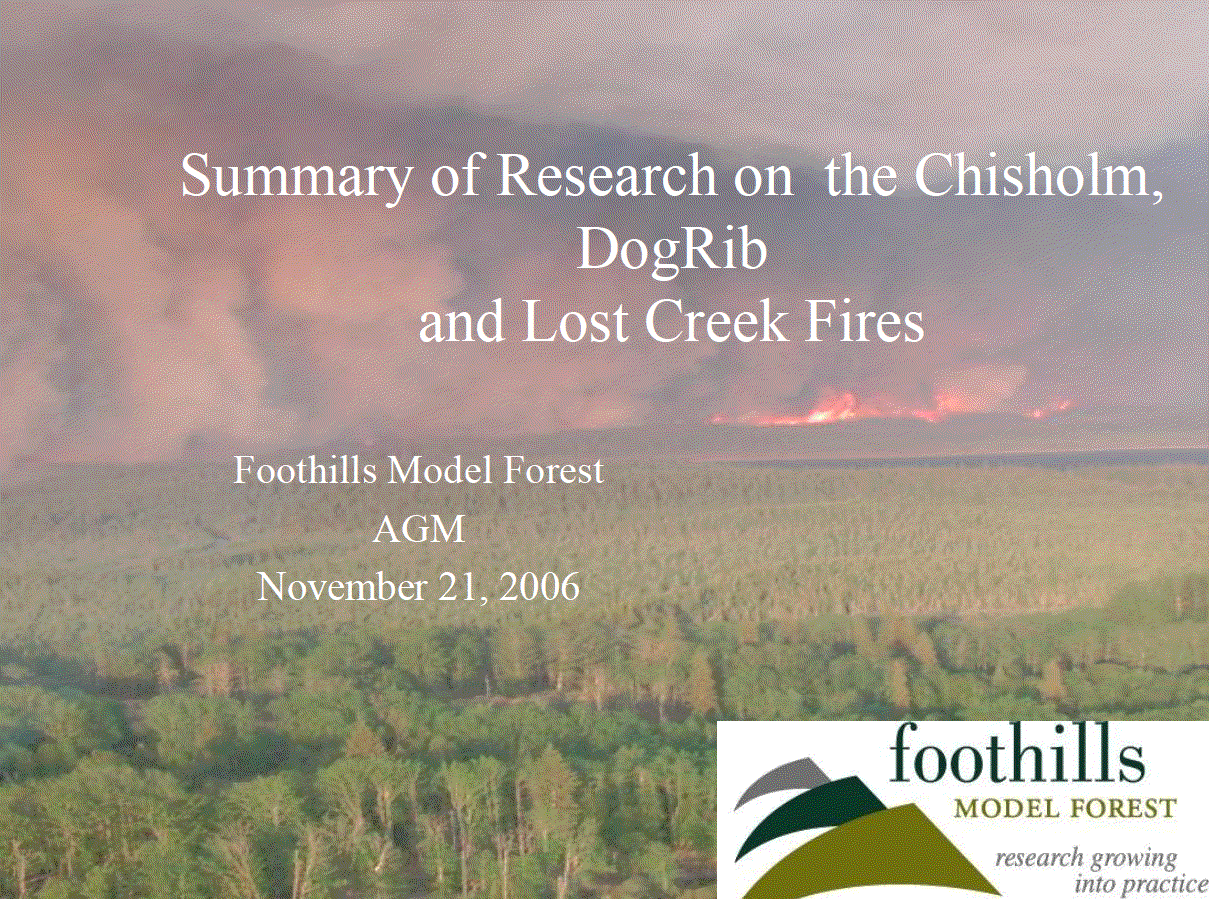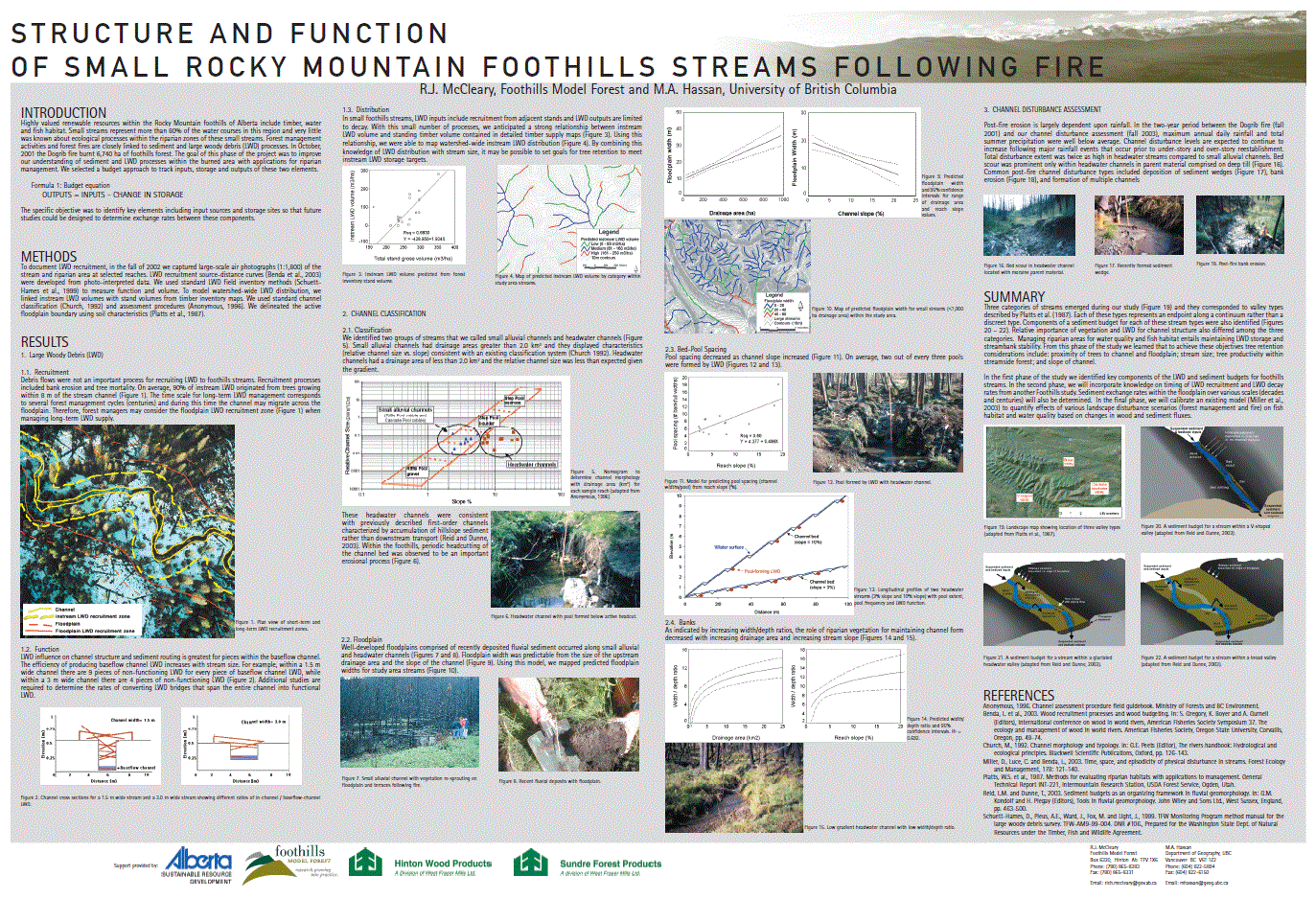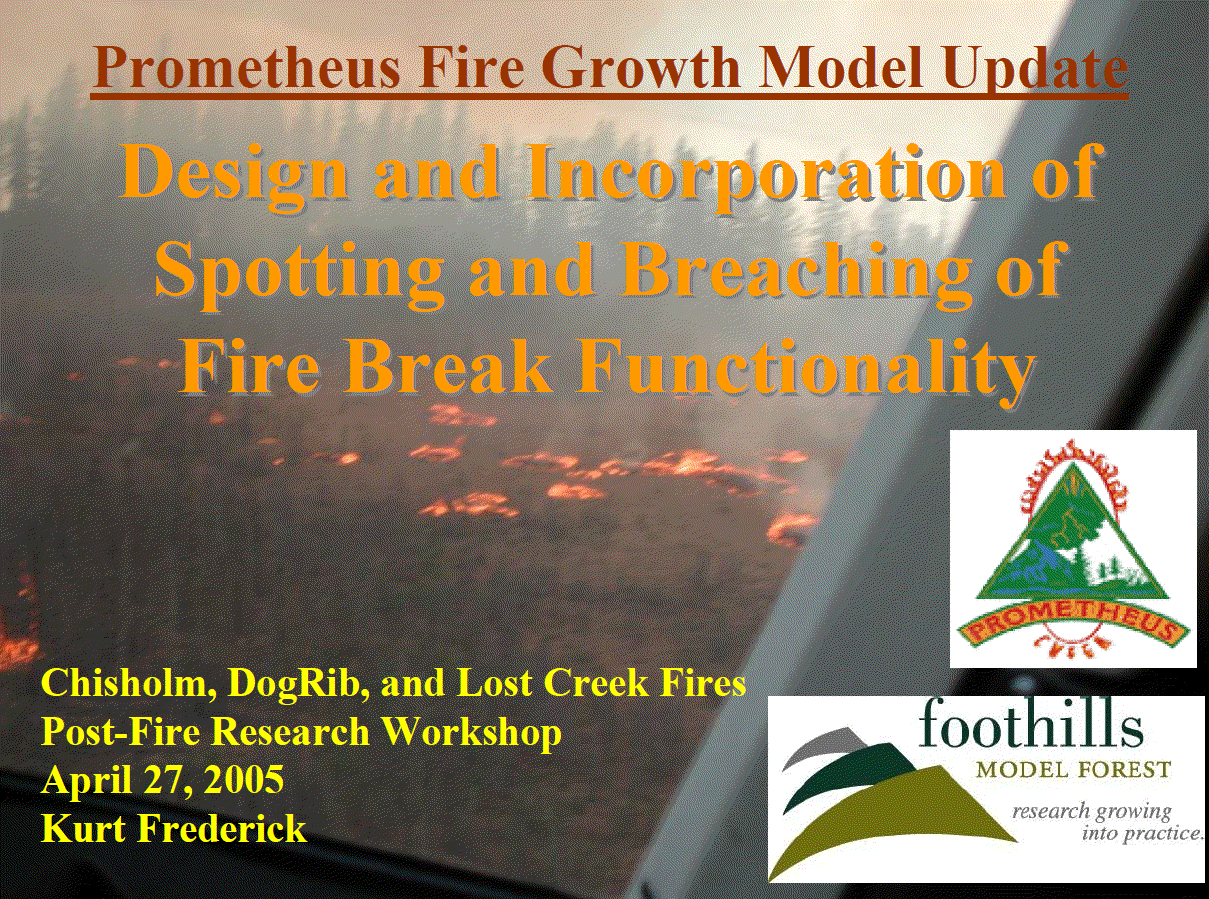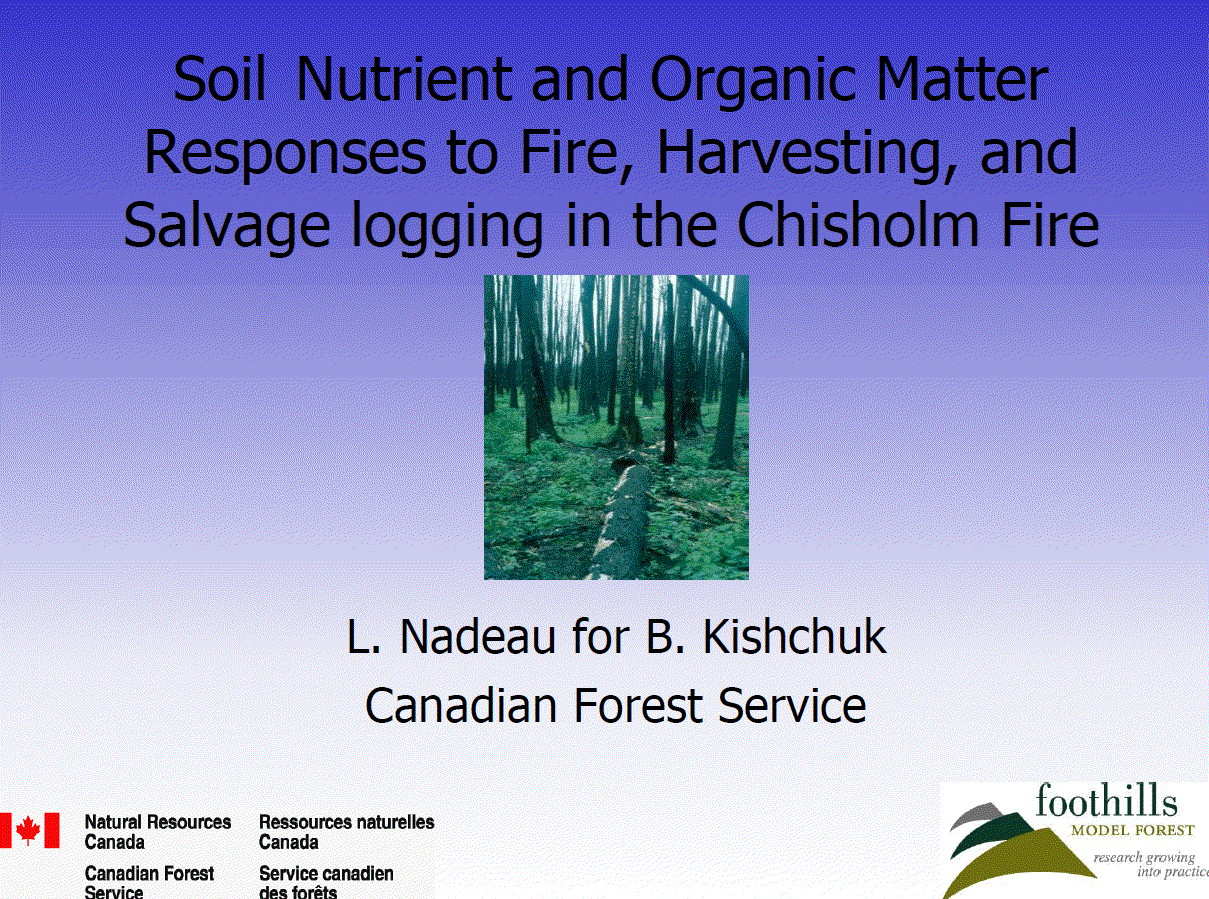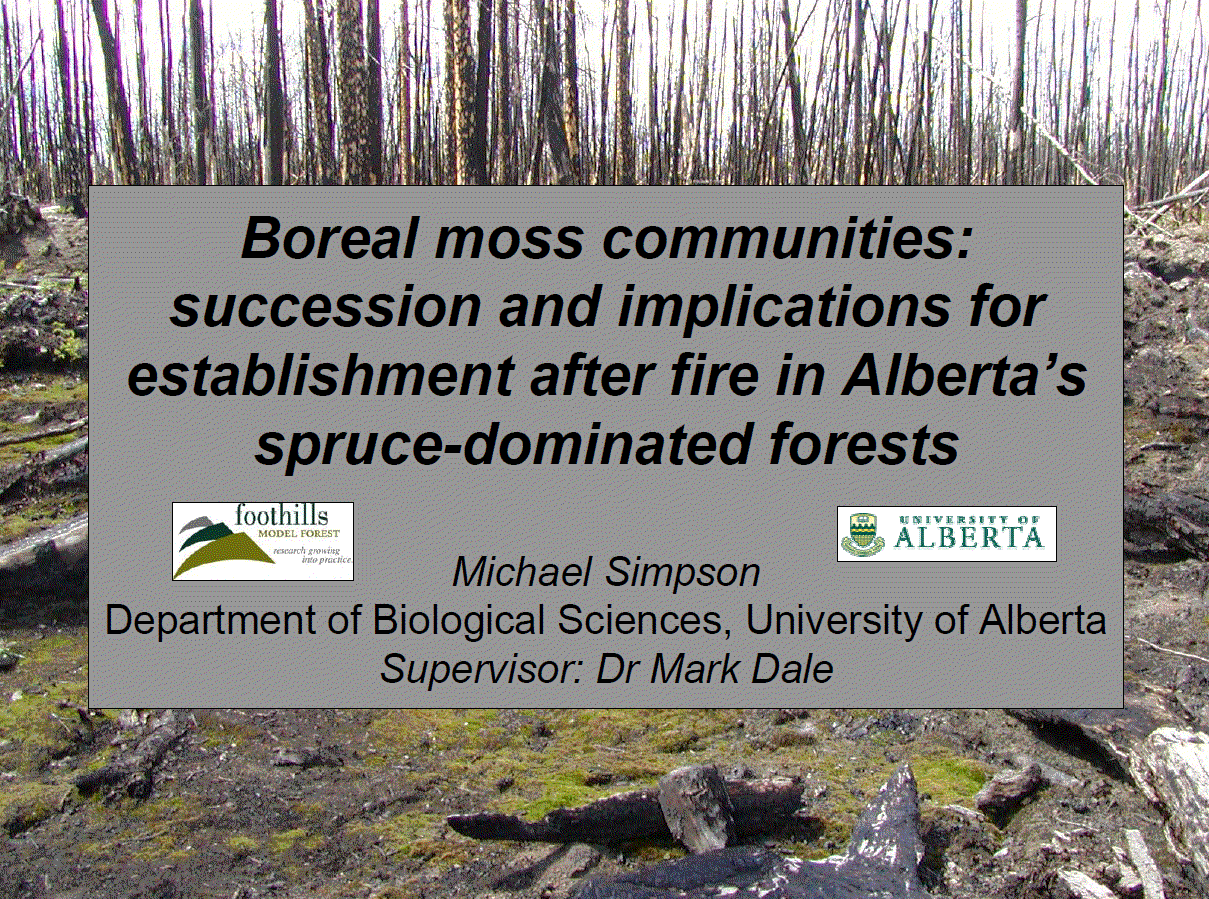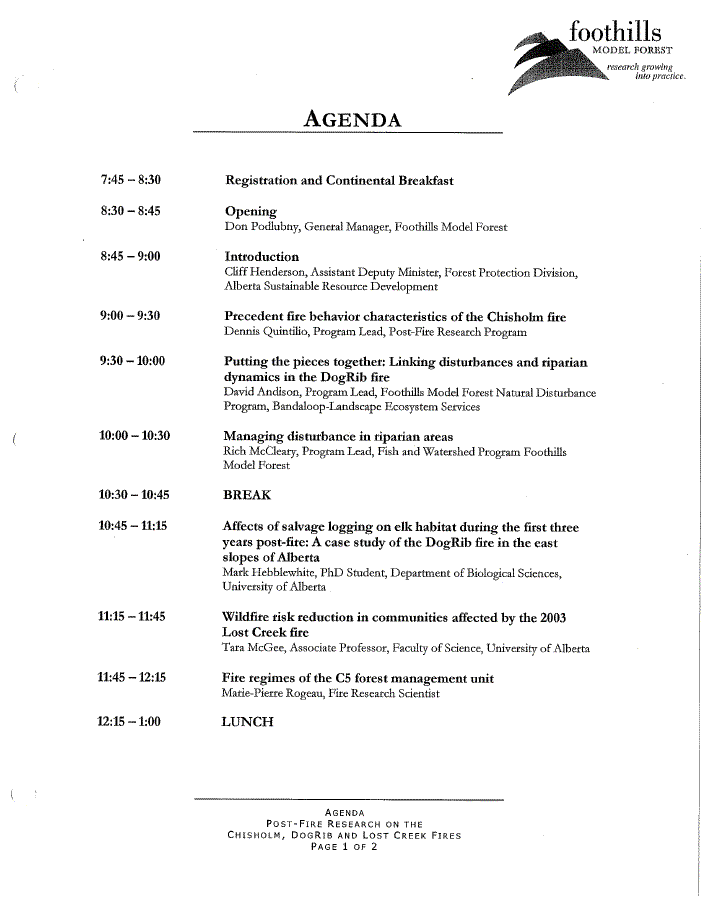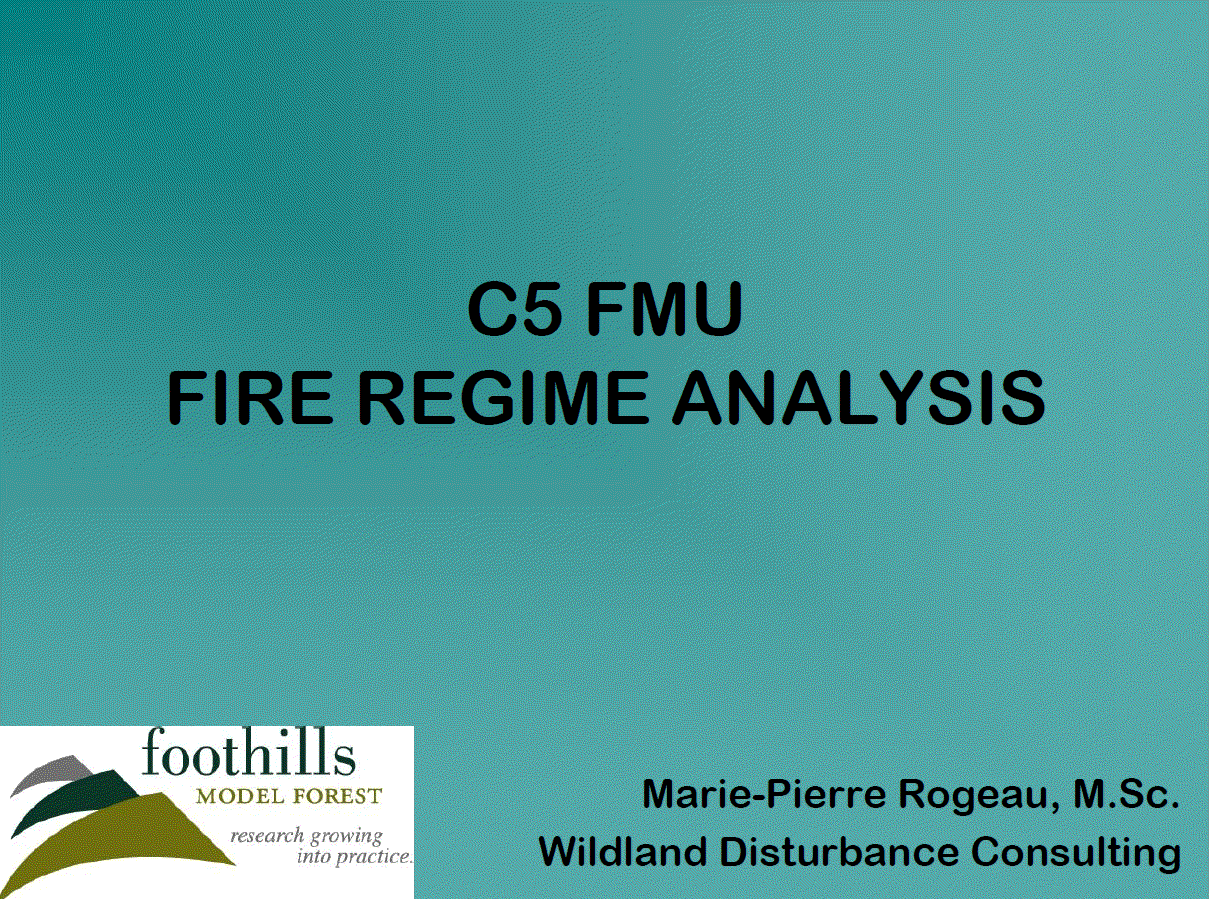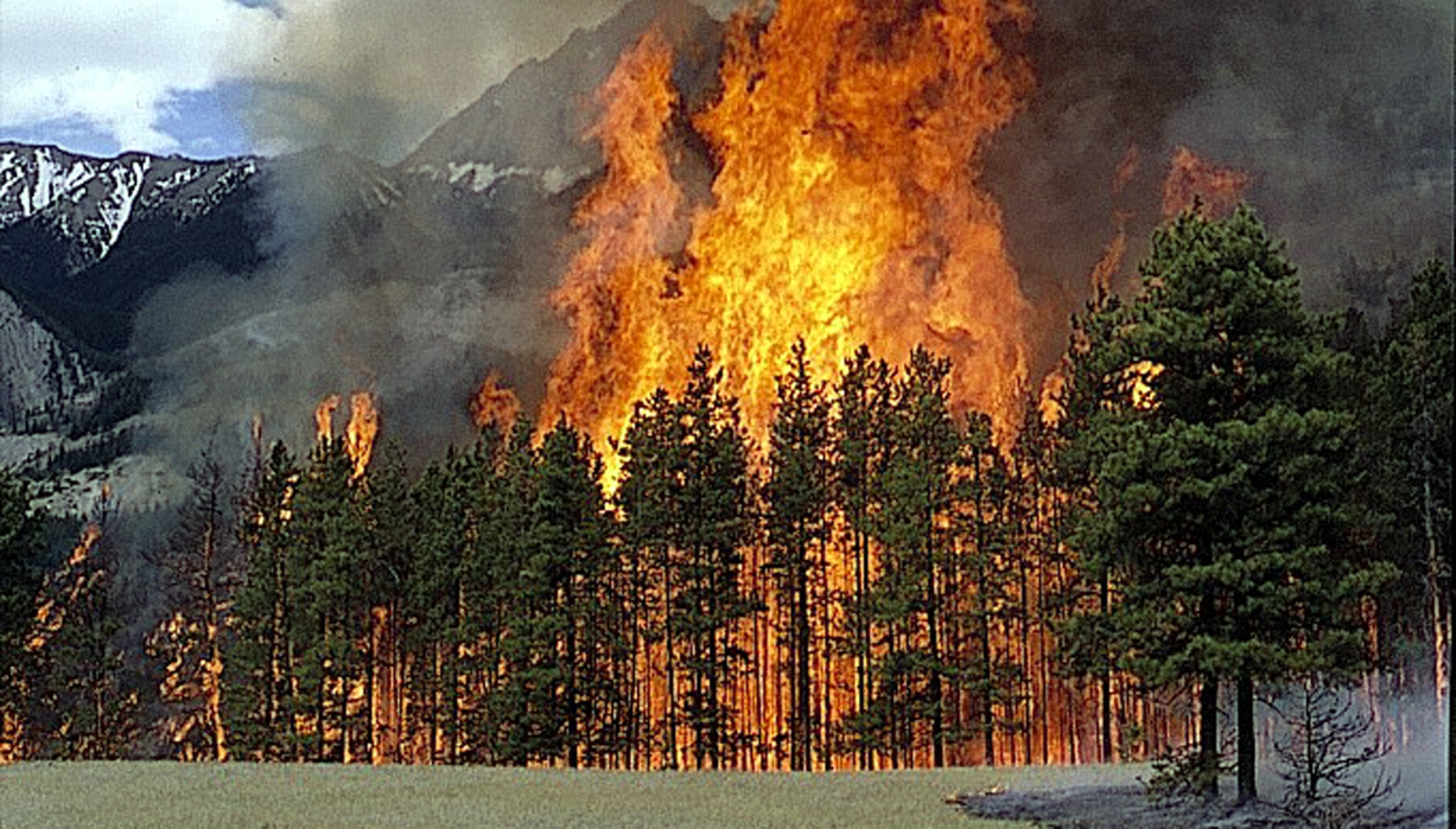
Wildfire Research Program
The Wildfire Research Program investigated the Chisholm, Dogrib, and Lost Creek Fires, and ran the Firesmart/Forestwise project in Jasper from 2001 until 2006.
fRI Research has always recognized the vital importance fire plays in renewing the landscape. Our first major fire research begain in 1994 under the Natural Disturbance Program, which described the patterns caused by historical disturbance, primarily wildfire. In the early 2000s, a Provincial Environmental Enhancement Fund grant and three important fires were the impetus to establish the Wilfire Research Program.
The program studied the May 2001 Chisholm Fire, the September 2001 Dogrib Fire, and the 2003 Lost Creek Fire. Topics included fire spread modelling, ecological effects on different speices, the soil nutrient and organic matter response to fire, post-fire riparian dynamics, reclamation on fire lines, fuel management in harvest blocks, and historical fire patterns. There were also projects in connection to the Socio-Economic Program that studied public understanding of fire risk, and recommendations for improved fire safety.
Upon the completion of projects related to those three fires, the Wildfire Research Program wound down, but fire has continued to be an active area of research under the Natural Disturbance Program, which became the Healthy Landscapes Program.



